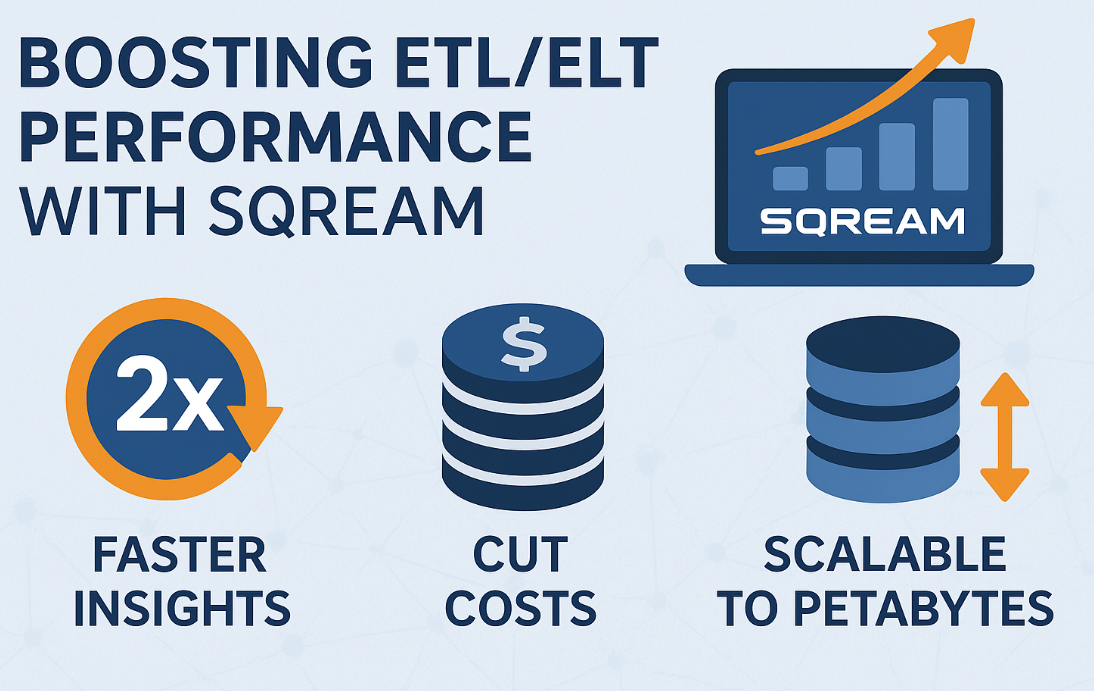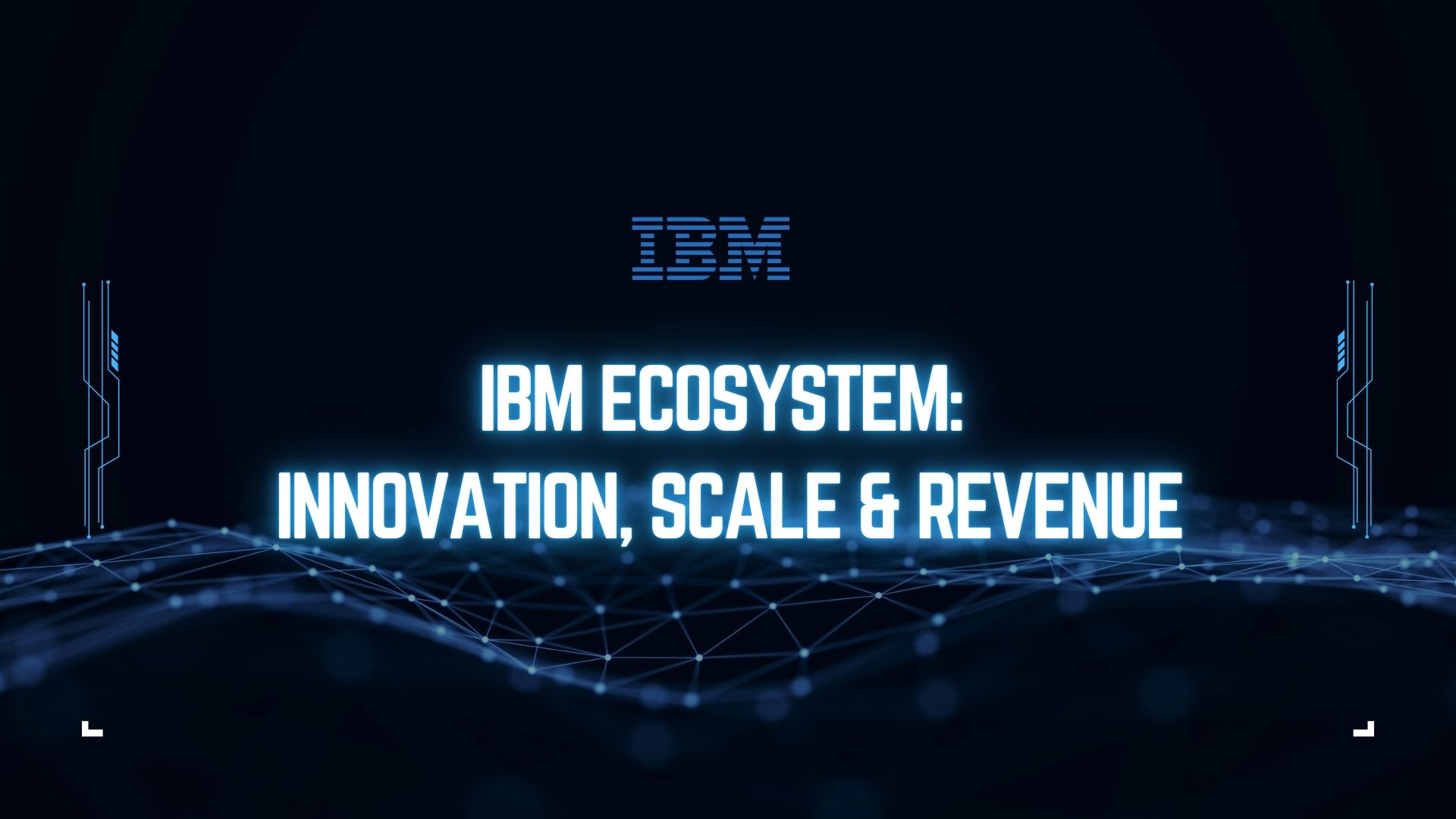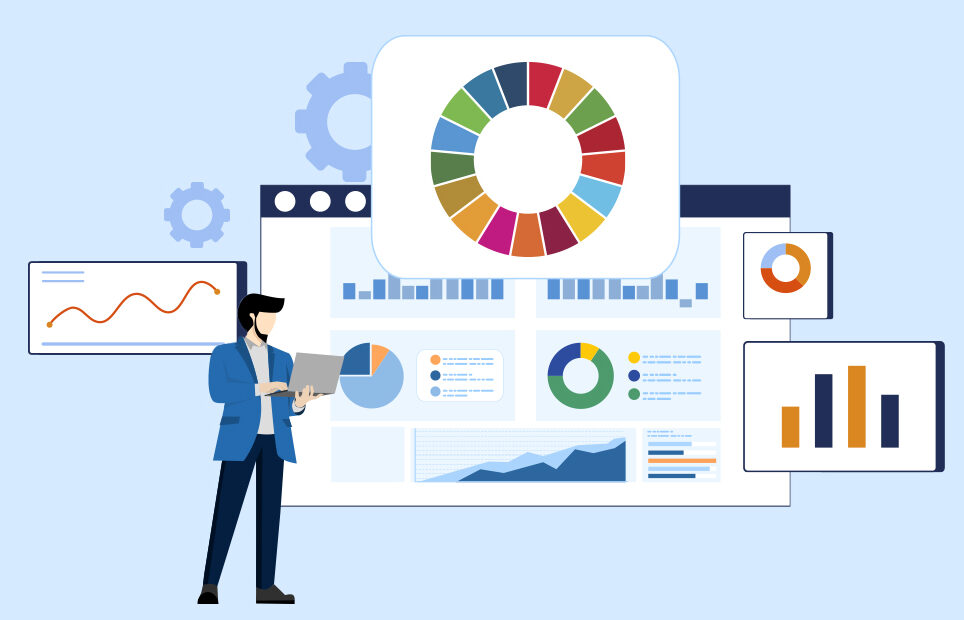In the face of global challenges such as climate change, population growth, and resource scarcity, the agriculture industry stands at a critical juncture. To meet the growing demand for food while ensuring sustainability and profitability, farmers and agribusinesses must embrace innovative solutions. Among these, CPLEX and mathematical optimization emerge as powerful tools that are transforming farm planning, scheduling, and decision-making processes. This blog delves deep into how these advanced techniques are reshaping the agricultural landscape, addressing key challenges, and paving the way for a more efficient and productive future.
The Evolving Landscape of Agriculture
The agriculture industry has come a long way from its humble beginnings. Today, it faces a complex web of challenges that demand sophisticated solutions. Climate change has introduced unprecedented variability in weather patterns, making traditional farming practices less reliable. The global population continues to grow, putting pressure on farmers to increase yields while using resources more efficiently. Meanwhile, consumer preferences are shifting towards sustainably produced food, adding another layer of complexity to agricultural operations.
In this evolving landscape, decision-making in agriculture has become increasingly complex. Farmers must consider a multitude of factors when planning their operations, including soil conditions, weather forecasts, market demands, resource availability, and environmental regulations. The sheer number of variables involved makes it virtually impossible for humans to process all this information and make optimal decisions without technological assistance.
This is where CPLEX and mathematical optimization enter the picture, offering a systematic and data-driven approach to agricultural decision-making. These advanced techniques allow farmers and agribusinesses to process vast amounts of data, consider multiple scenarios, and arrive at optimal solutions that balance various objectives and constraints.
Challenges in Modern Agriculture
To fully appreciate the impact of CPLEX and mathematical optimization on agriculture, it’s crucial to understand the specific challenges that the industry faces. Let’s explore some of the most pressing issues:
Resource Allocation: One of the fundamental challenges in agriculture is the efficient allocation of resources. Farmers must decide how to best use their land, water, fertilizers, and other inputs to maximize productivity while minimizing costs and environmental impact. This involves complex trade-offs, as increasing the use of one resource might lead to diminishing returns or negative consequences in other areas. For instance, excessive fertilizer use can boost yields in the short term but may lead to soil degradation and water pollution over time.
Crop Planning and Rotation: Deciding which crops to plant, where to plant them, and how to rotate them over time is a complex optimization problem. Farmers need to consider factors such as soil nutrients, pest and disease cycles, market demand, and crop synergies. Poor crop planning can lead to reduced yields, increased susceptibility to pests and diseases, and missed market opportunities.
Irrigation Management: Water is a precious resource in agriculture, and its efficient use is crucial for both sustainability and profitability. Farmers must determine when to irrigate, how much water to use, and which irrigation methods to employ. These decisions are complicated by factors such as weather variability, soil moisture levels, crop water requirements at different growth stages, and water availability.
Labor and Equipment Scheduling: Efficient scheduling of labor and equipment is vital for maximizing productivity and minimizing costs. This involves coordinating various activities such as planting, harvesting, pest control, and maintenance across different fields and crops. Poor scheduling can result in bottlenecks, idle resources, and missed critical time windows for farm operations.
Supply Chain and Logistics: Agriculture doesn’t end at the farm gate. The industry must grapple with complex supply chain and logistics challenges, including storage, transportation, and distribution of agricultural products. Optimizing these processes is crucial for reducing post-harvest losses, maintaining product quality, and meeting market demands efficiently.
Risk Management: Agriculture is inherently risky due to factors such as weather variability, pest outbreaks, and market fluctuations. Effective risk management strategies are essential for ensuring the long-term viability of agricultural operations. This involves decisions around crop diversification, insurance, hedging, and adaptive management practices.
Sustainability and Environmental Impact: As awareness of environmental issues grows, farmers face increasing pressure to adopt sustainable practices. This includes reducing greenhouse gas emissions, minimizing soil erosion, conserving biodiversity, and optimizing the use of inputs like fertilizers and pesticides. Balancing these environmental objectives with economic goals is a complex optimization problem.
Market Dynamics and Price Volatility: Agricultural markets are notoriously volatile, with prices fluctuating due to factors such as weather events, global trade policies, and changing consumer preferences. Farmers need to make planting and marketing decisions in the face of this uncertainty, trying to maximize their returns while managing risk.
These challenges are interconnected and often involve conflicting objectives. Traditional decision-making approaches, based on intuition and past experiences, are increasingly inadequate in this complex environment. This is where CPLEX and mathematical optimization come into play, offering a more sophisticated and data-driven approach to addressing these challenges.
Understanding CPLEX and Mathematical Optimization
To appreciate how CPLEX and mathematical optimization can address the challenges in agriculture, it’s important to understand what these tools are and how they work.
CPLEX is a high-performance mathematical programming solver developed by IBM. It is designed to solve large-scale optimization problems efficiently. CPLEX can handle various types of optimization models, including linear programming, mixed-integer programming, and quadratic programming. This versatility makes it well-suited to address the diverse challenges in agriculture.
Mathematical optimization, also known as mathematical programming, decision optimization, or decision intelligence, is a branch of applied mathematics and computer science. It focuses on finding the best solution from a set of possible alternatives, given a set of constraints and objectives. In the context of agriculture, mathematical optimization can be used to determine the best decisions for farm planning, resource allocation, scheduling, and various other aspects of agricultural operations.
The key components of mathematical optimization are:
- Decision Variables: These represent the choices that need to be made. In agriculture, decision variables might include the acreage allocated to each crop, the amount of water used for irrigation, or the schedule for equipment usage.
- Objective Function: This is a mathematical expression that quantifies the goal to be optimized. In agriculture, the objective might be to maximize profit, minimize costs, or achieve some balance between economic and environmental objectives.
- Constraints: These are limitations or requirements that the solution must satisfy. Agricultural constraints might include land availability, water restrictions, labor capacity, or regulatory requirements.
- Parameters: These are the known quantities that influence the problem but are not decision variables. In agriculture, parameters might include crop yields, market prices, weather forecasts, or soil characteristics.
But, how CPLEX and mathematical optimization work? When applied to agricultural problems, CPLEX and mathematical optimization follow these general steps:
- Problem Formulation: The real-world agricultural problem is translated into a mathematical model. This involves defining the decision variables, objective function, constraints, and parameters.
- Data Integration: Relevant data from various sources (e.g., soil sensors, weather stations, market reports) are collected and integrated into the model.
- Solution Generation: CPLEX uses sophisticated algorithms to explore the solution space efficiently. It considers millions of potential scenarios to find the optimal or near-optimal solution that satisfies all constraints and maximizes (or minimizes) the objective function.
- Solution Analysis: The results are analyzed to derive insights and actionable recommendations for farm management.
- Sensitivity Analysis: The model can be used to explore how changes in various parameters (e.g., market prices, weather conditions) might affect the optimal solution, helping in scenario planning and risk management.
The power of CPLEX and mathematical optimization lies in their ability to handle complex, multi-dimensional problems that would be impossible for humans to solve manually. They can process vast amounts of data, consider numerous variables and constraints simultaneously, and find optimal solutions in a fraction of the time it would take using traditional methods.
Applying CPLEX and Mathematical Optimization to Agricultural Challenges
Now that we understand the challenges facing agriculture and the basics of CPLEX and mathematical optimization, let’s explore how these tools can be applied to address specific issues in the industry.
Optimizing Crop Planning and Rotation: Mathematical optimization can revolutionize crop planning by considering multiple factors simultaneously. A typical model might include:
- Decision variables: Acreage allocated to each crop in each field
- Objective function: Maximize expected profit or a combination of profit and sustainability metrics
- Constraints: Land availability, crop rotation requirements, market demand limits, water availability
- Parameters: Expected yields, market prices, production costs, soil nutrient levels
CPLEX can solve this complex problem, providing farmers with an optimal crop plan that balances profitability with sustainability and risk management. The model can also incorporate crop rotation constraints to maintain soil health and reduce pest pressures over multiple growing seasons.
Irrigation Management: Efficient water use is crucial in agriculture. An optimization model for irrigation might include:
- Decision variables: Amount and timing of irrigation for each field
- Objective function: Maximize crop yield while minimizing water usage
- Constraints: Water availability, pump capacity, labor availability
- Parameters: Crop water requirements, soil moisture levels, weather forecasts
By using CPLEX to solve this model, farmers can develop precise irrigation schedules that optimize water use efficiency, reduce costs, and improve crop yields.
Resource Allocation: Optimization can help farmers make the best use of their limited resources. A resource allocation model might consider:
- Decision variables: Allocation of land, labor, equipment, and inputs to various activities
- Objective function: Maximize farm profitability or a combination of economic and environmental objectives
- Constraints: Resource availability, operational requirements, regulatory limits
- Parameters: Resource costs, productivity rates, market conditions
CPLEX can solve this model to provide farmers with an optimal resource allocation plan that maximizes efficiency and profitability while respecting all operational constraints.
Labor and Equipment Scheduling: Efficient scheduling is vital for farm operations. An optimization model for this might include:
- Decision variables: Timing and assignment of tasks to workers and equipment
- Objective function: Minimize idle time and overtime costs while completing all necessary tasks
- Constraints: Worker availability, equipment capacity, task dependencies, weather windows
- Parameters: Task durations, labor costs, equipment operating costs
By using CPLEX to solve this scheduling problem, farms can significantly improve their operational efficiency, reduce costs, and ensure that critical tasks are completed on time.
Supply Chain Optimization: Mathematical optimization can improve the entire agricultural supply chain. A model might consider:
- Decision variables: Production quantities, storage levels, transportation routes
- Objective function: Minimize total supply chain costs while meeting demand
- Constraints: Production capacity, storage capacity, transportation capacity, product shelf life
- Parameters: Production costs, storage costs, transportation costs, demand forecasts
CPLEX can solve this complex network optimization problem, helping to reduce costs, minimize waste, and improve responsiveness to market demands.
Risk Management: Optimization can play a crucial role in agricultural risk management. A model might include:
- Decision variables: Crop mix, insurance levels, hedging strategies
- Objective function: Maximize expected profit while minimizing risk (e.g., using a mean-variance approach)
- Constraints: Land availability, capital constraints, risk tolerance limits
- Parameters: Expected yields, price forecasts, yield and price volatilities
By solving this model, CPLEX can help farmers develop robust risk management strategies that balance profitability with financial stability.
These examples illustrate how CPLEX and mathematical optimization can be applied to various aspects of agriculture. The power of these tools lies in their ability to consider multiple objectives and constraints simultaneously, process large amounts of data, and find optimal solutions that might not be apparent through intuition or traditional analysis methods.
Technical Aspects of Implementing CPLEX and Mathematical Optimization in Agriculture
Implementing CPLEX and mathematical optimization in agriculture involves several technical considerations:
Model Development: The first step is to develop a mathematical model that accurately represents the agricultural problem. This requires a deep understanding of both the agricultural domain and optimization techniques. The model must capture all relevant decision variables, constraints, and objectives. It’s crucial to strike a balance between model complexity and solvability – a model that is too simplistic may not capture important aspects of the problem, while one that is too complex may be computationally intractable.
Data Integration: Agricultural optimization models often require data from various sources, including:
- Soil sensors and weather stations for environmental data
- Satellite imagery and drones for crop monitoring
- Market information systems for price and demand data
- Farm management systems for operational data
Integrating these diverse data sources and ensuring data quality is a significant technical challenge. It often requires developing robust data pipelines and implementing data cleaning and validation procedures.
Algorithm Selection: CPLEX offers various algorithms for solving different types of optimization problems. Selecting the appropriate algorithm depends on the nature of the problem (e.g., linear vs. non-linear, continuous vs. integer variables) and the size of the instance. For large-scale agricultural problems, techniques such as decomposition methods or heuristic approaches may be necessary to obtain solutions in a reasonable time frame.
Computational Resources: Solving complex agricultural optimization problems can be computationally intensive. Depending on the problem size and complexity, it may require significant computing power. Cloud computing platforms can be leveraged to access scalable computational resources as needed.
Solution Analysis and Visualization: Once CPLEX generates a solution, it’s crucial to analyze and interpret the results in a way that is meaningful for agricultural decision-makers. This often involves developing custom visualization tools and dashboards that can present the optimization results in an intuitive and actionable format.
Integration with Existing Systems: To be truly effective, optimization solutions need to integrate seamlessly with existing farm management systems. This might involve developing APIs or other interfaces to allow real-time data exchange and decision support.
Handling Uncertainty: Many agricultural decisions involve significant uncertainty (e.g., future weather conditions, market prices). Advanced techniques such as stochastic optimization or robust optimization can be employed to handle this uncertainty explicitly in the optimization model.
Model Maintenance and Updating: Agricultural systems are dynamic, with changing conditions and requirements. The optimization models need to be designed in a way that allows for easy updating of parameters and even model structure as conditions change.
These technical aspects highlight the complexity of implementing CPLEX and mathematical optimization in agriculture. It requires a multidisciplinary approach, combining expertise in agriculture, data science, operations research, and software engineering.
Need CPLEX Training? Enroll for
Business Aspects of Applying CPLEX and Mathematical Optimization to Agriculture
While the technical aspects of implementing CPLEX and mathematical optimization in agriculture are crucial, the business considerations are equally important for successful adoption and value creation.
Return on Investment (ROI): Implementing advanced optimization solutions requires significant upfront investment in technology, expertise, and change management. However, the potential returns can be substantial. For example, yield increases of up to 20%, cost reductions of 15-30%, and overall profit improvements of 10-25%.
The exact ROI will depend on various factors, including farm size, crop types, and the specific challenges being addressed. It’s important to conduct a thorough cost-benefit analysis before embarking on an optimization project.
Competitive Advantage: In an increasingly competitive agricultural landscape, the ability to make data-driven, optimal decisions can provide a significant edge. Farms using advanced optimization techniques can:
- Respond more quickly to market changes
- Manage resources more efficiently
- Reduce waste and environmental impact
- Improve product quality and consistency
These advantages can lead to better market positioning, stronger customer relationships, and improved long-term sustainability of the business.
Scalability and Growth: CPLEX and mathematical optimization solutions can be designed to scale with the business. As farms grow or diversify, the optimization models can be expanded to handle increased complexity. This scalability ensures that the initial investment in optimization technology continues to deliver value as the business evolves.
Risk Management: By enabling more precise planning and scenario analysis, optimization tools can significantly enhance a farm’s risk management capabilities. This can lead to more stable financial performance and increased resilience to external shocks, which is particularly valuable in the volatile agricultural sector.
Sustainability and Compliance: Optimization can help farms improve their environmental performance by minimizing resource use and reducing waste. This not only reduces costs but also helps farms comply with increasingly stringent environmental regulations. It can also enhance the farm’s reputation and access to markets that prioritize sustainable production methods.
Partnerships and Ecosystem: Implementing advanced optimization solutions often requires partnerships with technology providers, consultants, and potentially other farms or agribusinesses. Building and managing these partnerships effectively is crucial for success.
These business aspects underscore the fact that implementing CPLEX and mathematical optimization in agriculture is not just a technical challenge, but also a strategic business decision. It requires careful planning, strong leadership commitment, and a holistic view of the farm’s operations and strategic goals.
Potential ROI and Benefits of CPLEX and Mathematical Optimization in Agriculture
The adoption of CPLEX and mathematical optimization in agriculture can lead to significant returns on investment and a wide range of benefits. Let’s explore these in more detail:
Financial returns include:
- Increased Yields: By optimizing crop planning, resource allocation, and farming practices, farms can see yield increases of up to 20%. For a medium-sized farm, this could translate to hundreds of thousands of dollars in additional revenue
- Cost Reductions: Optimization can lead to more efficient use of inputs such as water, fertilizers, and pesticides. Farms could experience cost reductions of 15-30% in these areas. For a large farm operation, this could amount to millions of dollars in savings annually.
- Improved Profit Margins: The combination of increased yields and reduced costs can significantly boost profit margins. Overall profit improvements of 10-25% could be experienced by farms adopting advanced optimization techniques.
- Better Capital Allocation: By optimizing investment decisions, farms can ensure that capital is allocated to the most profitable activities, improving return on investment across the operation.
Operational benefits include:
- Enhanced Decision-Making: CPLEX and mathematical optimization provide data-driven insights that enable more informed and objective decision-making. This can lead to better long-term planning and more agile responses to changing conditions.
- Improved Resource Utilization: Optimization ensures that all resources – land, water, labor, and equipment – are used in the most efficient manner possible. This can significantly increase overall farm productivity.
- Streamlined Operations: By optimizing scheduling and logistics, farms can reduce bottlenecks, minimize idle time, and ensure smooth operations even during peak periods.
- Reduced Waste: Optimal planning and execution can significantly reduce waste in all areas of farm operations, from input use to post-harvest losses.
Risk management benefits include:
- Improved Resilience: By enabling scenario planning and risk-aware decision-making, optimization tools can help farms better prepare for and respond to various risks, from weather events to market fluctuations.
- Diversification Strategies: Optimization can help farms develop optimal crop diversification strategies that balance risk and return.
- Financial Stability: More stable and predictable operations can lead to improved cash flow management and financial stability.
Environmental and sustainability benefits include:
- Reduced Environmental Impact: Optimization can lead to more efficient use of resources and reduced use of inputs like fertilizers and pesticides, minimizing the farm’s environmental footprint.
- Soil Health: Optimal crop rotation and resource management strategies can improve long-term soil health and fertility.
- Water Conservation: Irrigation optimization can significantly reduce water usage while maintaining or improving crop yields.
- Carbon Footprint Reduction: By optimizing operations and resource use, farms can reduce their overall carbon footprint, contributing to climate change mitigation efforts.
Market and competitive benefits include:
- Improved Product Quality: Optimization can lead to more consistent and higher quality produce, potentially commanding premium prices in the market.
- Market Responsiveness: Advanced planning and optimization tools allow farms to quickly adjust their production in response to market signals, capturing opportunities and avoiding oversupply situations.
- Competitive Advantage: Farms using advanced optimization techniques can operate more efficiently and profitably than their competitors, gaining market share over time.
While the exact ROI will vary depending on the specific circumstances of each farm, these benefits illustrate the transformative potential of CPLEX and mathematical optimization in agriculture. The initial investment in these technologies can pay for itself many times over through improved efficiency, profitability, and sustainability.
Cresco International's Role in Agricultural Optimization
As the agriculture industry increasingly recognizes the value of advanced optimization techniques, many businesses are seeking expert guidance to implement these solutions effectively. This is where Cresco International, as IBM’s trusted partner and a consulting firm with deep expertise in decision optimization and CPLEX, plays a crucial role.
Cresco International brings a unique blend of technical knowledge and industry understanding to the table. Their team of experts has extensive experience in applying CPLEX and mathematical optimization to various agricultural challenges. This expertise allows them to quickly understand the specific needs of each client and develop tailored solutions that address their unique challenges.
Cresco International’s approach begins with a comprehensive assessment of the client’s current operations, data sources, and decision-making processes. Their consultants work closely with farm managers and stakeholders to identify key optimization opportunities. This might involve:
- Crop Planning Optimization: Developing models that determine the optimal crop mix and rotation strategies based on soil conditions, market forecasts, and resource constraints.
- Irrigation Scheduling: Creating advanced irrigation optimization models that balance water use efficiency with crop yield maximization.
- Resource Allocation: Designing comprehensive resource allocation models that optimize the use of land, labor, equipment, and inputs across the farm.
- Supply Chain Optimization: Developing end-to-end supply chain optimization solutions that improve efficiency from farm to market.
- Risk Management: Creating sophisticated risk management models that help farms balance profitability with financial stability in the face of various uncertainties.
Cresco International recognizes that successful implementation of decision optimization solutions requires more than just technical expertise. Their approach includes:
- Change Management: Developing strategies to ensure buy-in from all stakeholders and smooth adoption of the new optimization-driven processes.
- Training and Capacity Building: Providing comprehensive training to farm staff to ensure they can effectively use and maintain the optimization systems.
- ROI Analysis: Conducting detailed return on investment analyses to quantify the benefits of the optimization solution and justify the investment.
- Continuous Improvement: Establishing processes for ongoing refinement and expansion of the optimization models as the farm’s needs evolve.
Cresco International’s partnership with IBM allows them to leverage the latest advancements in CPLEX and related technologies. This means that their clients benefit from cutting-edge optimization capabilities, cloud integration, and scalable solutions that can grow with their business needs.
Cresco International is committed to the long-term success of its clients. They provide ongoing support and consultation to ensure that the optimization solutions continue to deliver value as the farm’s operations evolve and new challenges arise.
By partnering with Cresco International, agricultural businesses can accelerate their adoption of mathematical optimization and CPLEX, bypassing many of the common pitfalls and challenges associated with implementing these advanced techniques. This not only speeds up the time to value but also maximizes the potential benefits and ROI of the optimization initiatives.
Need CPLEX Training? Enroll for
Conclusion
The agriculture industry stands at the cusp of a new era, one where data-driven decision-making and advanced optimization techniques will play a pivotal role in ensuring food security, sustainability, and profitability. CPLEX and mathematical optimization represent powerful tools for addressing the complex challenges faced by modern farms and agribusinesses.
From improving resource allocation and scheduling to enhancing sustainability and profitability, these techniques offer a systematic approach to farm planning and decision-making that far surpasses traditional methods. The potential benefits, including increased yields, reduced costs, improved environmental performance, and enhanced risk management, make a compelling case for the adoption of these technologies.
However, implementing CPLEX and mathematical optimization in agriculture is not without its challenges. It requires a combination of technical expertise, industry knowledge, and change management skills. This is where partners like Cresco International play a crucial role, bridging the gap between advanced technology and practical agricultural applications.
As we look to the future of agriculture, it’s clear that mathematical optimization will play an increasingly vital role in shaping a more productive, sustainable, and resilient food system. Farms and agribusinesses that embrace these technologies today will be well-positioned to thrive in the increasingly complex and competitive agricultural landscape of tomorrow.
The journey towards optimized agriculture is just beginning, and the potential for innovation and improvement is vast. With the right tools, expertise, and partnerships, the agriculture industry can rise to meet the challenges of feeding a growing global population while preserving our planet’s resources for future generations.











